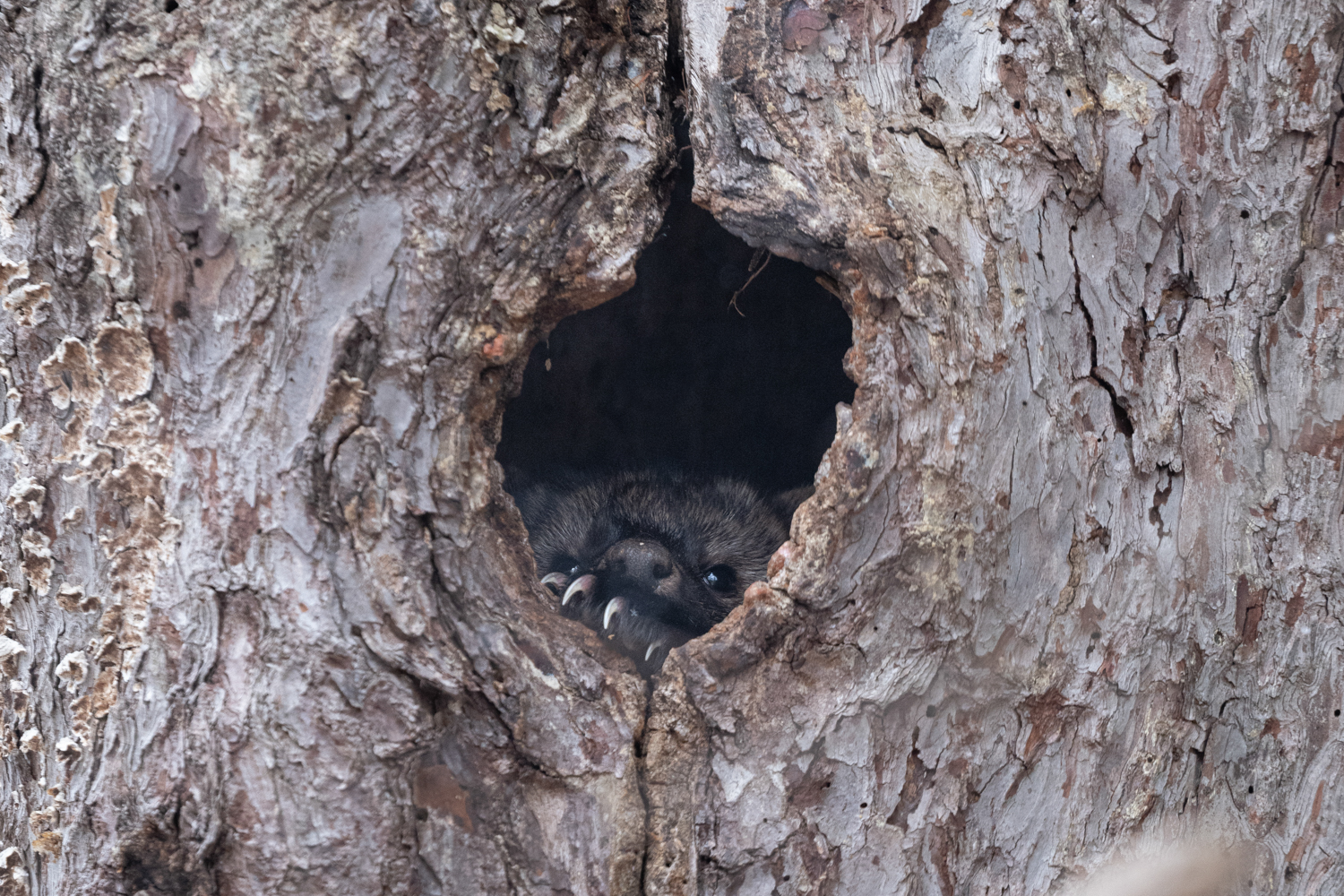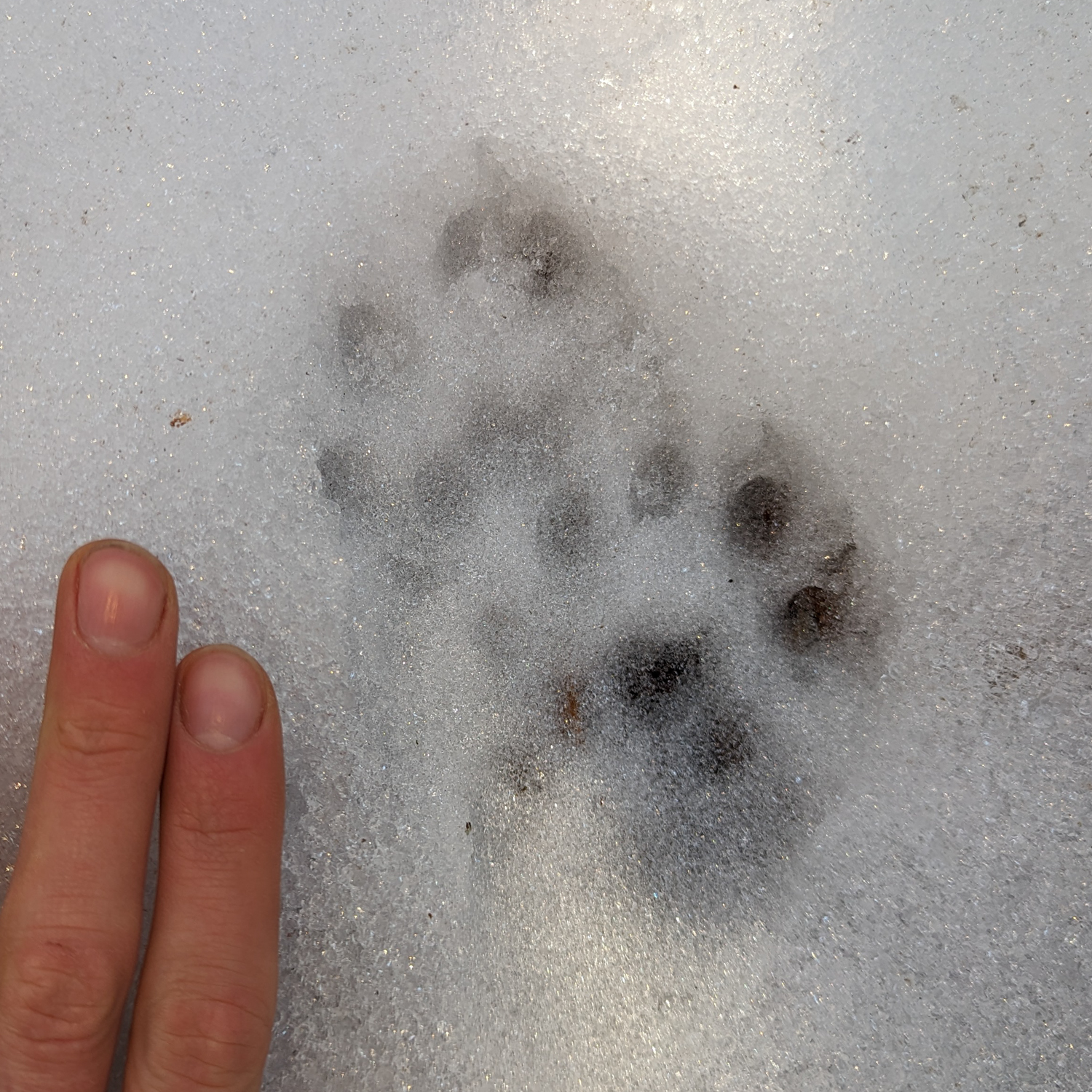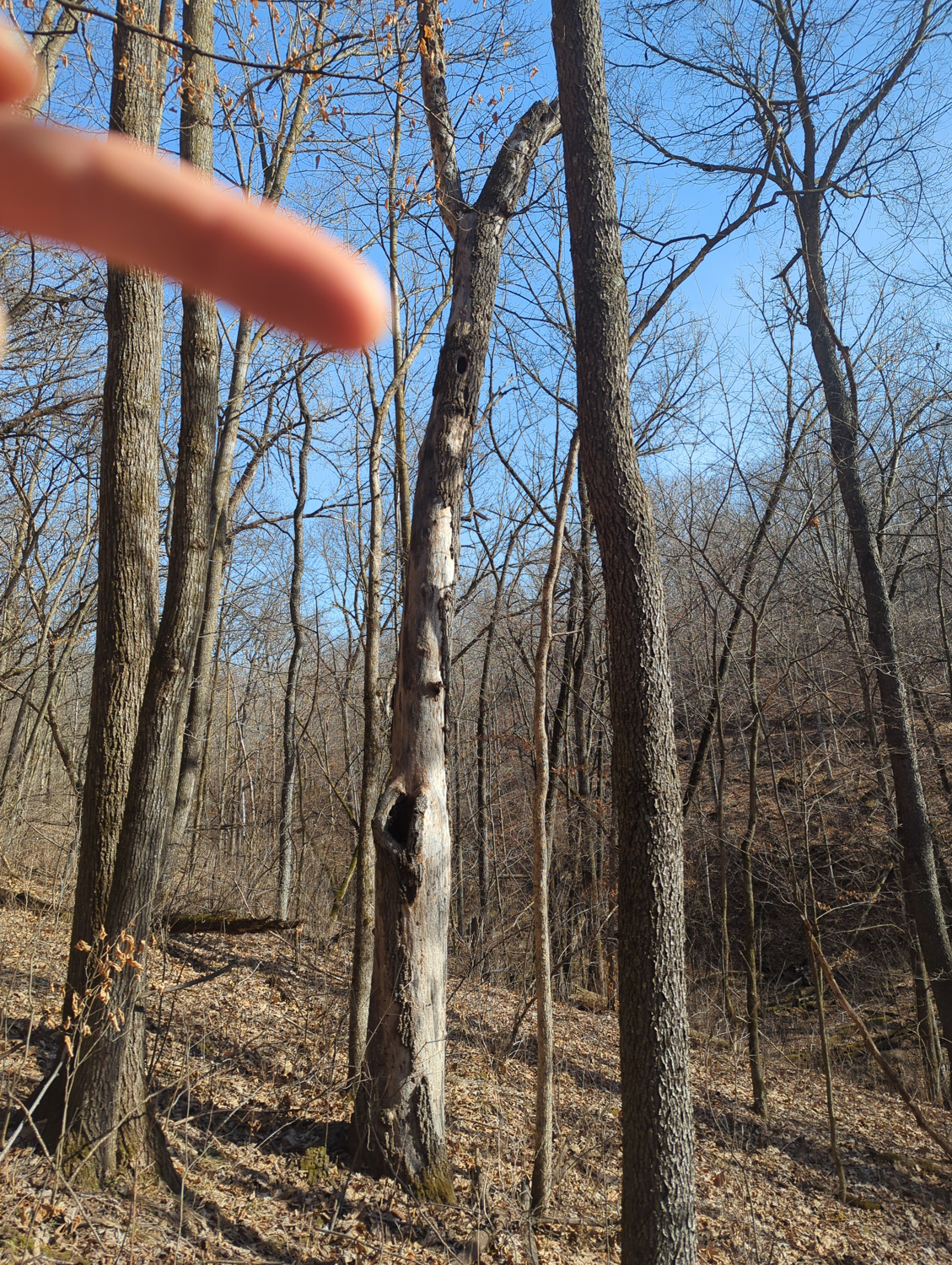
Fisher Breeding Season
It’s denning and mating season in the fisher world. Starting these past couple weeks, female fishers have selected cavity trees in which to give birth. The cavities they select are often just large enough for the female to squeeze through but small enough that a male can’t squeeze inside. After about a week of staying in the same tree, males often find the tree in which a female is held up in. When they do, they just stake themselves out at the base of the tree and wait. Once the female comes down from the cavity or returns to the tree after foraging, the male mates with her. Due to delayed implantation though, the female won’t become pregnant until the following January or February, assuming her body is in good enough shape.


Cavity used by a female fisher in southern Minnesota.
What I have found most shocking is what yearling females do. Yearling females will select a cavity tree like adults, but they won’t give birth because they’ve never been inseminated. However, the process of selecting a den tree is ingrained in them, and males will find them in the same way they do for adult females.
Like most carnivores, female fishers select for home ranges that are rich in resources, such as shelter (which for fishers includes cavities in standing and downed trees/wood) and food. For female fishers, the upper limit of their size is limited by how they can balance procuring food and tending to offspring.
Males, on the other hand, have a different set of rules. They select for shelter, to a somewhat lesser degree than females, and food resources, but access to females is another resource. Thus, without the constraint of raising kits, it is advantageous for males to be as large as possible. This is why male fishers can weigh 2-3 times more than females. The larger a male is, the more efficiently they can take down prey and fight off rivals, and they have the means of taking larger prey. Constraints on males include how large of a territory they can protect from other males and energetic demands of their morphology and physiology.
